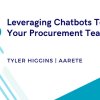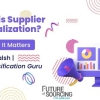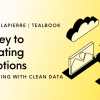It seems like there isn’t a day which goes by at the moment without a new robotic invention in the news, with promises around how these inventions will not only revolutionise our lives, but threaten our jobs.
In the outsourcing sector robots are most definitely on the way, or in some cases, already here. And it is, therefore, vital that businesses operating in this sector seriously consider how some robotic processes can enhance their operations – there’s no doubt competitors are also considering the same issue.
These robotic innovations can be roughly split into two separate areas: robotic process automation (RPA) and artificial intelligence (AI).
RPA, simply speaking, is a process which enables computer software to partially or fully automate human activities which are manual, repetitive and rule-based. Those back-office clerical processes which are often outsourced by large companies, usually offshore, are ideal jobs to give to RPA, as these tasks are often simple and require little analysis or subjective judgement.
AI is more advanced, as this system can train itself, meaning it can work independently to solve problems, process natural language and unstructured data. Clearly, this technology has some huge benefits for businesses, as it is able to capture data through vision and sound recognition, search and data analysis. AI then takes that information and is able to use natural language processing, reasoning and prediction to give a helpful output. Although AI isn’t yet fully developed, its potential is huge and some businesses are already using this technology to great effect. For example, Oracle’s Policy Automation Cloud Service is able to read business rules and policies and then ask customers relevant questions, perform eligibility checks and produce a decision report.
For most businesses, RPA and AI will enable a whole host of new capabilities. For example, these robots can increase security – a software robot can be trusted to execute processes as directed, without any risk of sensitive, personal information being leaked. RPA software can also help a company’s legacy system work with its cloud-based systems – this could enable automated ordering through a cloud interface which is translated to work with more traditional systems.
Offshore outsourcing service providers are focused on building up their own RPA and AI capabilities, with companies either acquiring sophisticated technology providers, or developing their own AI platforms. There is no doubt that RPA and AI is already and will continue to disrupt the outsourcing sector – RPA completely skews the business case for outsourcing to large, global service providers, which have built their business models around employing more people and exploiting offshore labour arbitrage opportunities. In addition, many businesses have started to include RPA capability as a criterion in selecting an outsourcing service provider. More widely across the sector, it is expected RPA will put pressure on costs and increase competition across suppliers.
These new innovations have some interesting implications for outsourcing contracts: if the service provider is the owner of the IP and physically implements the RPA/AI solution that can make it very difficult for the client to take any of these operations back in-house or transfer the services to another provider. Therefore many contracts are likely to include securing the client rights to the RPA solution to avoid lock-in by means of automation.
We’re at the brink of the robot revolution; the technology we have today is still relatively immature but the pace of adoption and sophistication of technology is accelerating. The cost benefits are clear – a software robot can do the job of between two and five full-time employees and the level of quality can be higher – no margins for human error when RPA or AI is involved.
There is an obvious risk that RPA and AI could threaten the future of outsourcing businesses (especially those with large offshore capabilities), as customers may seek to implement their own RPA and AI capabilities and take processes back in-house. However, providing that service providers are willing to adopt a flexible and customer-orientated approach to RPA and AI (including, in particular, sharing the benefits with their customers); they should be able to adapt to such threat.








